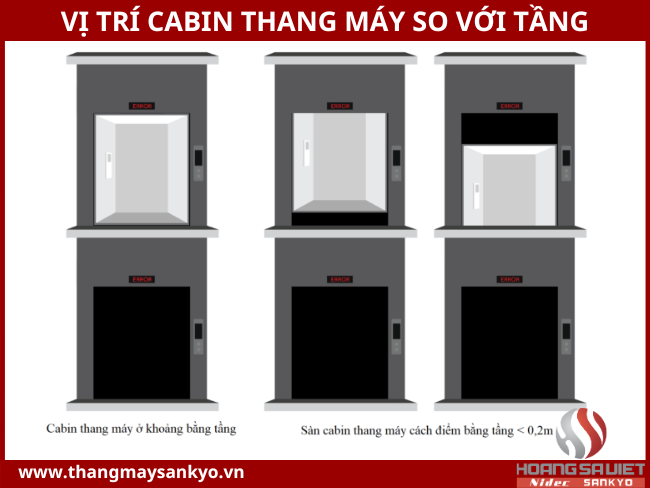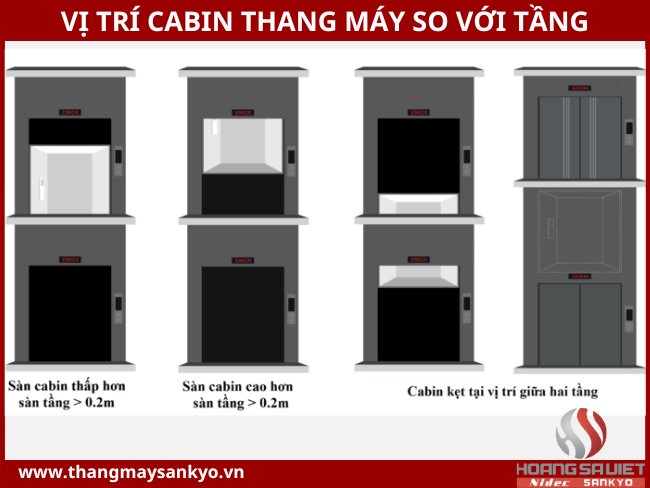The system is processing. Please wait a moment!
- Home Knowledge & Experience Sharing Experience and Knowledge About Elevators
Elevator Rescue Procedure
TABLE OF CONTENTS
Elevators play an important and indispensable role in high-rise buildings and commercial centers, where frequent and continuous use of elevators can lead to unwanted problems. Problems such as elevators stopping working , elevator doors not opening , elevator power failure or elevators running too fast can occur .
To deal with these emergency situations, elevator rescue procedures are extremely important. Understanding the elevator rescue procedures will help us deal with any situation more safely and effectively.
In addition, knowledge of elevator rescue procedures is not only useful for users but also important for on-site technical staff and professional rescue teams . Mastering this elevator rescue procedure helps them to respond flexibly and ensure maximum safety for human health and property.
See also:
Top 10+ latest beautiful hydraulic elevator models in 2024
450kg hydraulic elevator - Popular family elevator line to consider
ELEVATOR RESCUE PROCEDURE FOR PASSENGERS USING ELEVATORS
Elevator accidents are extremely rare events, with an occurrence rate of only 0.00000015% . In other words, only about one accident occurs for every 6.7 million elevator trips. The majority of serious elevator accidents involve people who work directly with the elevator, such as installation, maintenance, and repair.
However, the risk of elevator accidents can still affect users, especially when the elevator is not regularly maintained or when there is a power source problem.
Below are 5 dos and don'ts when stuck in an elevator that users should keep in mind:


Elevator automatic stop is a response designed to handle any problem that occurs during operation. According to statistics, self-rescue is often one of the leading causes of death and injury when using elevators.
When elevator users perform self-rescue actions, they often try to pry open the cabin door, floor door or emergency exit on the roof of the cabin to escape. However, this action carries the risk of not knowing when the elevator will resume operation, and in such a situation, the elevator can become a major hazard.
In addition, there is a risk of falling into the elevator shaft or the cabin moving suddenly, which can cause collision and fall for people on the roof of the cabin.
For this reason, prohibiting cabin doors , floor doors and emergency exits on the cabin roof is a mandatory regulation in elevator design to minimize risks and ensure safety for users.
ELEVATOR RESCUE PROCEDURE FOR RESCUE FORCES
Rescue forces include on-site technical staff and professional rescue teams such as elevator technicians , fire police , fire fighting and rescue , when receiving notification of an incident from passengers or detecting an elevator problem, will immediately approach the people in the elevator cabin.
During the approach, the first priority is to reassure and calm the victim. The rescue team will ask for details such as the elevator number, floor number, number of people in the elevator, and their health condition. Maintaining constant communication via the intercom system with the person in the elevator helps to reassure them and update them on the situation.
The elevator rescue procedure is then carried out in specific steps depending on the position of the elevator cabin relative to the floor level. Common cases include:
The elevator cabin is located at floor level, and can be about 0.2m higher or lower than the floor.
This is considered a highly safe elevator rescue situation. The difference between the cabin and the floor level, which can be about 0.2m higher or lower than the floor, is within the allowable range according to technical standards.

In this case, the rescuer uses the key to open the landing door (and also opens the cabin door) and assists in removing the victim from the elevator. To reduce the risk of falling, elevator technical regulations set a limit for the opening area of the door to not exceed 0.2 m above and below the floor level of the floor. However, if the landing door and the cabin door are mechanically controlled at the same time, the opening area limit can be up to a maximum of 0.35 m above and below the floor level of the floor.
The location of the car can be determined by checking the position of the cable line relative to the marking line or by means of an indicator light in the elevator control cabinet if it is a machine room-less type. If the elevator car is at floor level, the door opening procedure can be performed immediately.

Elevator cabin in mid-floor position
For this situation, when the elevator has a machine room, the rescue process requires at least 2 people in the team, divided into 2 action groups operating effectively and closely according to the process:
- Ensure the rescue plan is unified between the two groups.
- Group 1 installs the crank and lever to move the elevator cabin. Once completed, this group notifies group 2 to release the brake and rotate the pulley.
- Group 2 releases the brake and rotates the pulley to move the cabin, with the assistance and observation of security personnel. When the painted line on the cable matches the painted mark on the machine base, and the cabin reaches the same level as the floor, group 2 is notified to stop.
- Group 2 confirmed the information and opened the rescue door, helping passengers leave the cabin safely.

For machine room-less elevators, when it is determined that the cabin is not within the floor level, i.e. the floor indicator light cluster is off or the painted line position is incorrect, the process of manually moving the cabin is carried out according to the following steps:

Once the cabin is back on level ground, the rescue process will continue as in case 1.
Elevator cabin stuck not moving
In this case, the rescue process is carried out in the following steps:
-
Group 1 removed the lever and crank from the elevator motor.
-
Group 2 reduces the total load on the roof of the cabin.
-
The two groups communicated via walkie-talkie to share information.
-
Team 2 tells the passengers to hold on and asks them to stay calm while waiting for help. Then, open the nearest cabin door and move to open the emergency hatch on the roof of the cabin. Once the emergency hatch is open, the passengers are led out safely.
Cabin does not move due to counterbalance
In case the cabin does not move due to counterbalance, the rescue procedure will be carried out as follows:
-
Group 1 removes the lever from the engine and informs group 2 when finished.
-
Group 2 loaded heavy objects onto the roof of the cabin and notified group 1 when finished.
-
Group 1 continues to perform the same rescue steps as in case 2 (elevator cabin in the middle of the floor).
Cabin stuck due to mechanical brake jam
In the event that the elevator cabin is jammed due to the elevator speeding down, causing the anti-fall brake to lock the cabin on the rail system, the rescue procedure becomes especially important. In this case, the manual elevator rescue system must be used to move the cabin up, to approximately the same level as the floor above.
Make sure the elevator car is within the floor level before opening the elevator door and removing the trapped person. Note that after removing the passenger from the car, the entire elevator must be checked and restarted. If the elevator continues to have problems, it must be stopped for repair and maintenance before being put back into operation.
Elevator owners and elevator operators need to be instructed on rescue procedures by elevator suppliers and maintenance units. At the same time, rescue forces also need to be trained in elevator techniques to carry out rescue procedures safely and effectively, minimizing damage to people and property.
To minimize the negative consequences of elevator accidents, the Vietnam Elevator Association has launched training programs on elevator rescue. At the same time, they aim to establish Emergency Response Centers to support elevator rescue work across the country. In addition, the Association is also shaping and developing industry-based standards to enhance safety in the use and maintenance of elevators.
PRICE SUCCESSFUL!
PRICE UNSUCCESSFUL!
Hotline 0707.025.789
Email hungpham@hoangsa



















